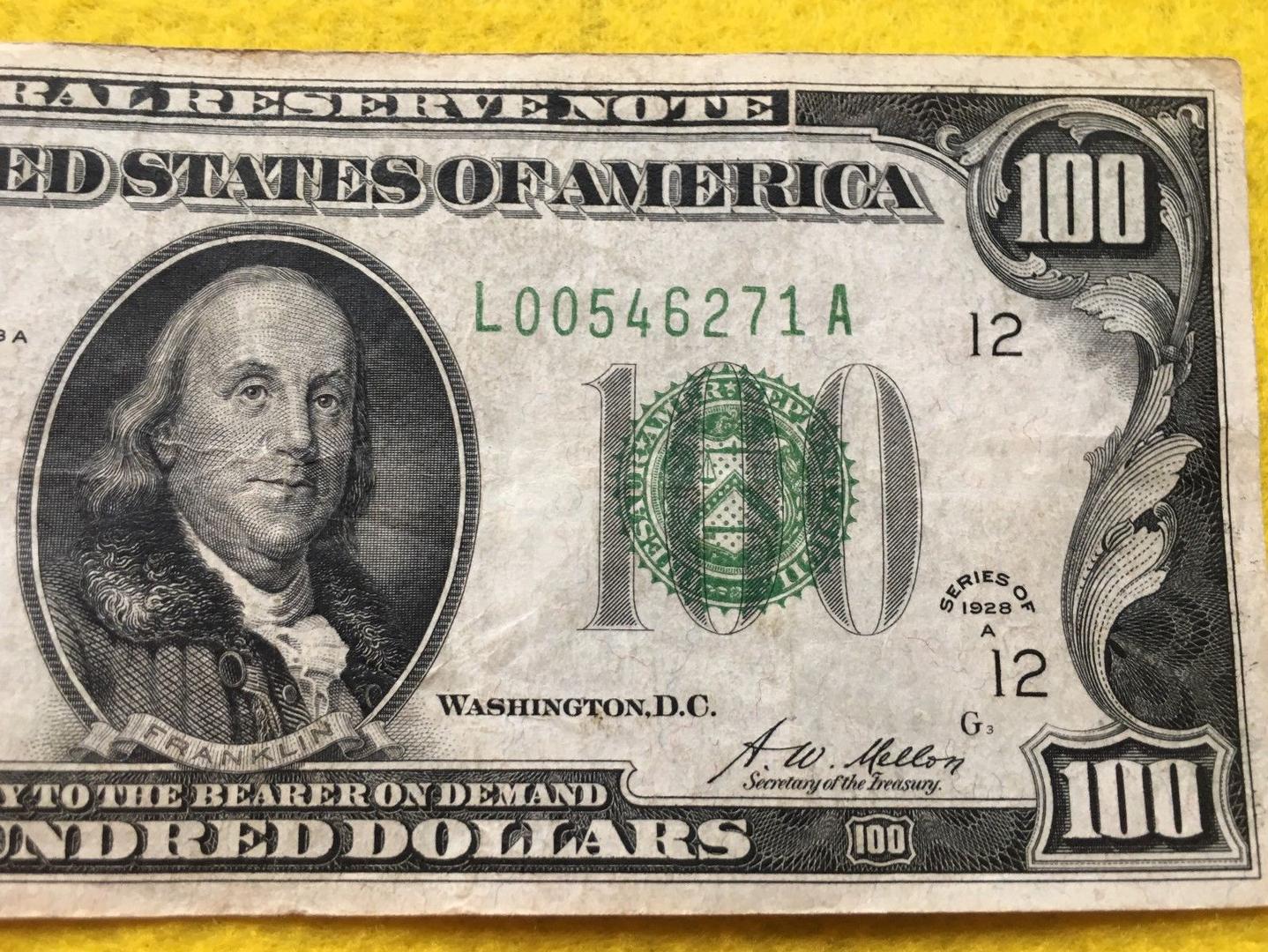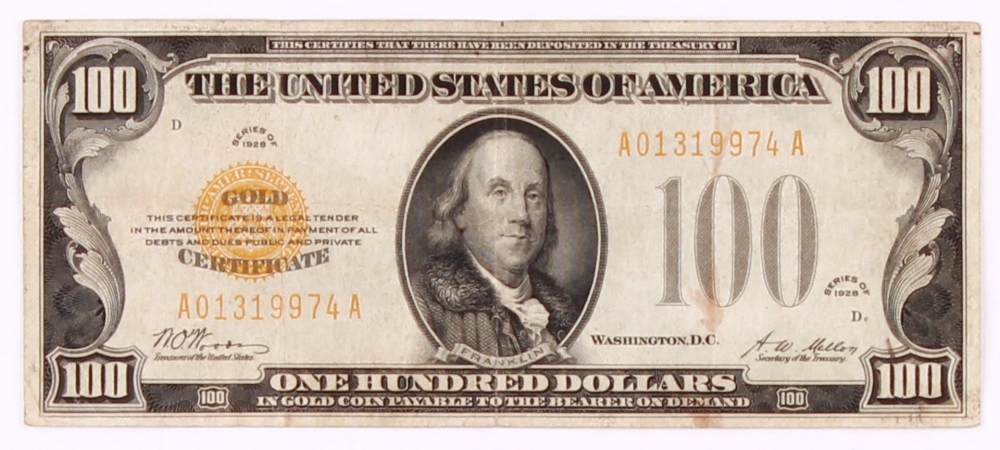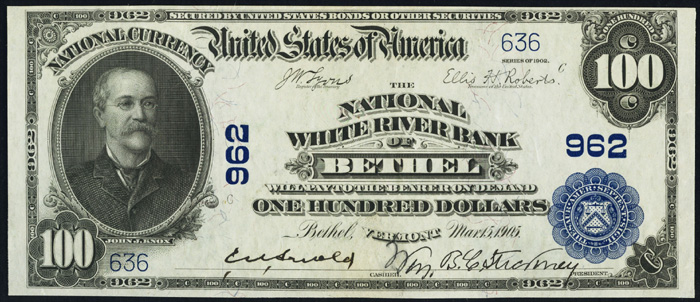The 1928 100 dollar bill value is a topic of interest for collectors and enthusiasts of U.S. paper currency. This particular series holds historical significance and monetary value, making it a sought-after piece for many. In this guide, we will explore the history, characteristics, series variations, grading standards, and potential worth of the 1928 $100 bill, along with insights into star notes and factors influencing its value.
Historical Significance Of The 1928 100 Dollar Bill
The 1928 100 dollar bill is part of the first series of small-size U.S. currency, introduced after the government transitioned from large-size notes. This transition marked a significant milestone in American monetary history.

Each 1928 $100 bill features a portrait of Benjamin Franklin on the front and Independence Hall on the reverse, symbolizing the nation’s values of independence and financial stability.
A unique feature of the 1928 series is the gold clause, which states: “Redeemable In Gold On Demand At The United States Treasury, Or In Gold Or Lawful Money At Any Federal Reserve Bank.” Although this clause no longer holds monetary value, it adds historical significance to these bills.
Design and Features
The 1928 one hundred dollar bill is distinguishable by several key design elements:
- Front: A portrait of Benjamin Franklin with a green Treasury seal on the right side and a black Federal Reserve seal on the left.
- Reverse: An image of Independence Hall, one of the most iconic landmarks in U.S. history.
- Serial Numbers: Green serial numbers with variations in star notes.
- Federal Reserve Bank Seal: A numeral indicating the issuing Federal Reserve Bank (1 through 12).
The 1928 $100 bill was printed in Washington, D.C., and signed by W.O. Woods (Treasurer of the United States) and A.W. Mellon (Secretary of the Treasury).
Series Variations and Their Value
The 1928 series has two primary variations: the 1928 and 1928A. Each series can have different values depending on their condition and rarity.
1. 1928 Series
- Very Fine Condition: Around $185
- Extremely Fine Condition: Approximately $250
- Uncirculated (MS 63): Around $750
- Star notes from the 1928 series are even more valuable:
- Very Fine: $900-$1,150
- Extremely Fine: Over $1,000
- Uncirculated (MS 63): Over $2,000
2. 1928A Series
- Very Fine Condition: $160-$170
- Extremely Fine Condition: $175-$190
- Uncirculated (MS 63): $325-$350
Star notes from the 1928A series are highly prized, especially from certain Federal Reserve Banks:
New York (2):
- Very Fine: $2,450
- Extremely Fine: $5,000
- Uncirculated (MS 63): $11,000
St. Louis (8):
- Very Fine: $4,000
- Extremely Fine: $7,500
- Uncirculated (MS 63): $15,000
Federal Reserve Bank and Value Differences
The issuing Federal Reserve Bank plays a significant role in determining the 1928 100 dollar bill value. Each bill is marked with a number corresponding to one of the 12 Federal Reserve Banks.

Here’s a general guide to their values in lightly circulated condition:
- Boston (1): Rare
- New York (2): $250
- Philadelphia (3): $350+
- Cleveland (4): $200+
- Richmond (5): $750+
- Atlanta (6): $250+
- Chicago (7): $150+
- St. Louis (8): $300+
- Minneapolis (9): $1,000+
- Kansas City (10): $1,000+
- Dallas (11): $2,000+
- San Francisco (12): $1,000+
Factors Influencing the Value of a 1928 $100 Bill
Several factors impact the worth of a 1928 one hundred dollar bill, including:
- Condition/Grade: Bills in uncirculated condition with crisp paper and vibrant ink are the most valuable.
- Serial Numbers: Serial numbers with multiple zeros or star notes (indicated by a star at the end of the serial number) can significantly increase value.
- Series Designation: 1928A series notes generally carry more value than the base 1928 series.
- Federal Reserve Bank: Bills from rarer banks, such as Minneapolis or Dallas, tend to be more valuable.
Understanding the Grading System
To accurately determine the 1928 100 dollar bill value, understanding the grading system is essential:
- Very Fine (VF): Light signs of circulation with minimal creases and folds.
- Extremely Fine (EF): Bright appearance with only a few minor folds.
- MS 63 Choice Uncirculated: No signs of circulation, crisp paper, and well-centered print.
Errors and Anomalies
Currency errors can significantly impact the value of a 1928 $100 bill. Misaligned seals, printing errors, or mismatched serial numbers are considered rare and desirable by collectors. If you suspect your note has an error, consult a professional currency dealer for verification.
Conclusion
The 1928 100 dollar bill value varies based on factors such as condition, series, Federal Reserve Bank, and the presence of star notes. While circulated notes may only be worth slightly above face value, uncirculated or rare bills can command thousands of dollars in the collectors’ market. For anyone holding a 1928 $100 bill, examining its condition, serial number, and issuing bank can reveal whether it’s an ordinary note or a valuable collector’s item. You’re an experienced numismatist or a novice collector, understanding the nuances of this historic piece of currency adds depth to your collection and potential financial rewards.

